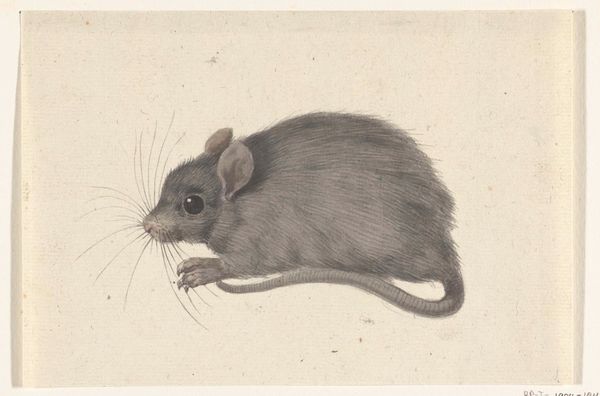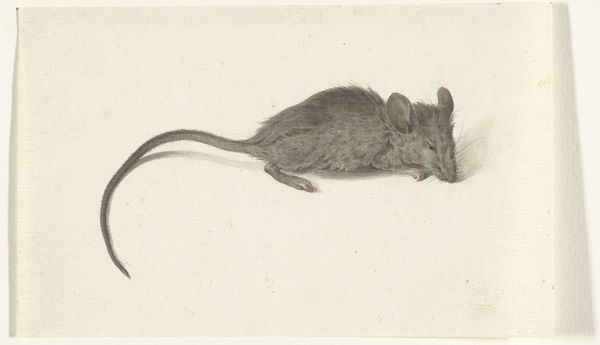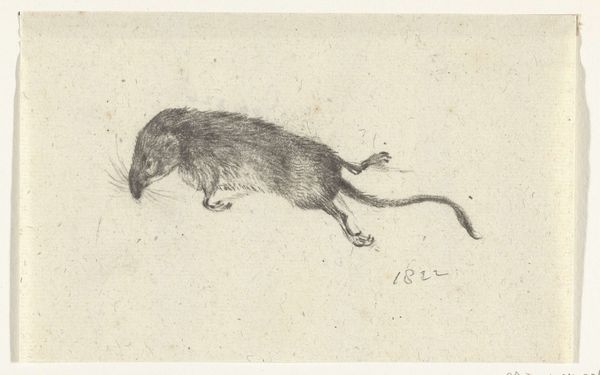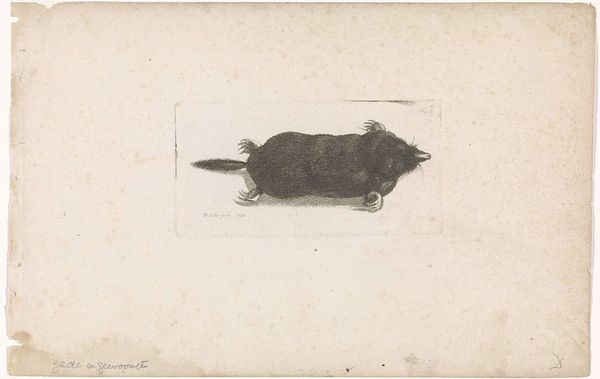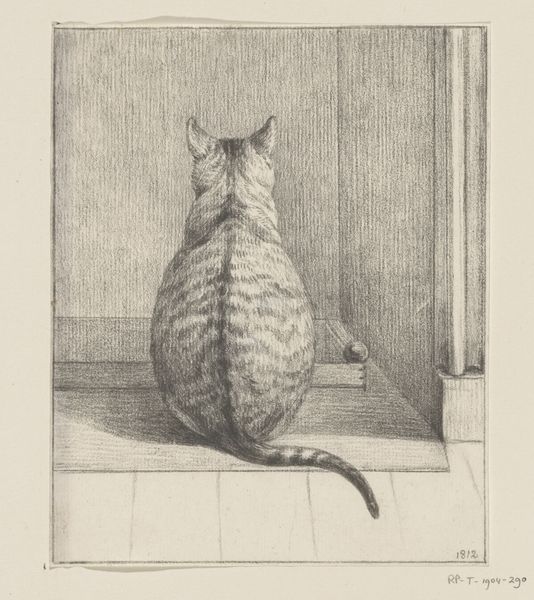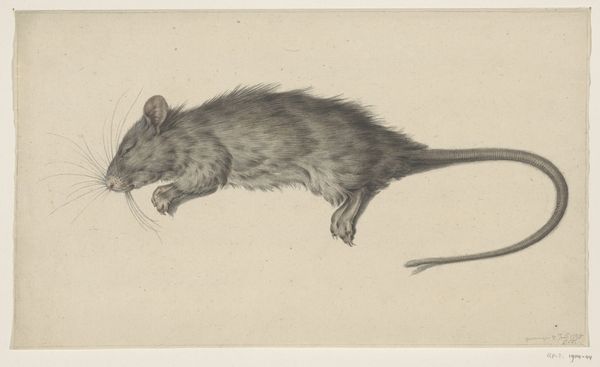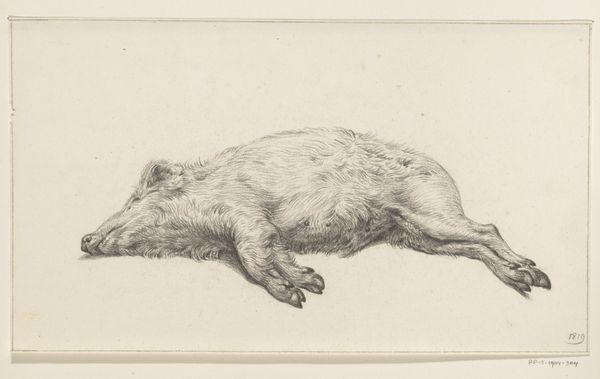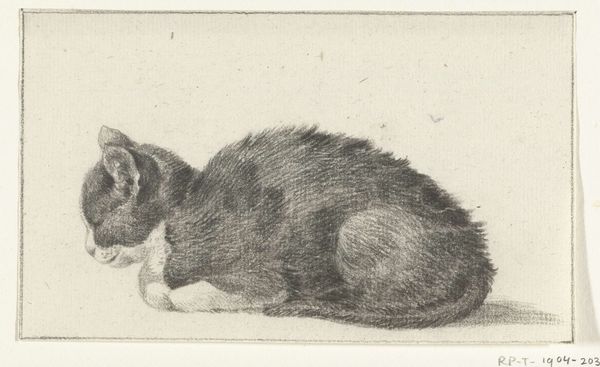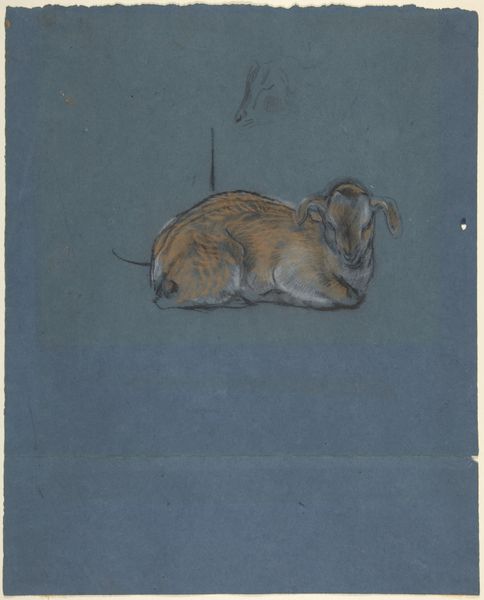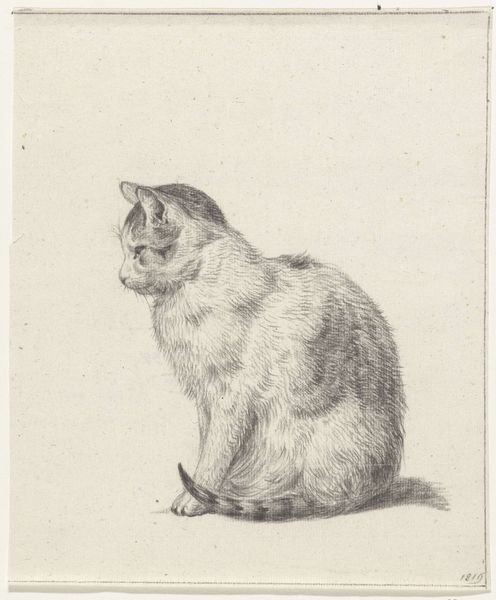
drawing, pencil
#
portrait
#
pencil drawn
#
drawing
#
pencil sketch
#
pencil
#
genre-painting
#
academic-art
#
realism
Dimensions: height 213 mm, width 269 mm
Copyright: Rijks Museum: Open Domain
Curator: Jean Bernard's "Muis (in een val?)," or "Mouse (in a trap?)" created in 1821 and held at the Rijksmuseum, presents a delicate study in pencil. Editor: My initial reaction is one of gentle melancholy. The gray hues and the almost anthropomorphic expression of the mouse lend a somber, reflective mood to this otherwise simple sketch. Curator: Absolutely. Note how Bernard utilizes subtle shading and incredibly fine lines to articulate form, focusing the viewer's gaze directly on the subject. There is a deliberate realism at play here, an academic attention to detail, that encourages contemplation. Editor: I'm struck by the texture implied solely through the gradations of pencil. Consider the artisanal method—each line meticulously placed to construct the mouse's fur and the coarse texture of the wooden trap. The labor itself is quite impressive. It evokes a dialogue on themes of capturing not just a subject, but the moment of making too. Curator: I agree. The construction of the wooden trap—essentially the mouse's prison—uses an understated geometrical configuration, counterpointed by the soft, organic contours of the mouse itself. Editor: Let's also not ignore that this isn't just any mouse, but an animal confined, most likely soon to be killed. Reflect on that 1821 context and what trapping small animals was like. Was Bernard indicting the casual cruelty of this act, especially given the skill employed to produce the artwork? Curator: A fascinating interpretation! It also leads us to examine the symbolic associations of the mouse. Typically linked to the mundane, Bernard elevates it via skilled rendering into something worthy of study and our aesthetic regard. Editor: Indeed. In essence, he transmutes the disposable into a commodity of value. What was likely a cruel method of rodent control is now held carefully, archived, interpreted. The labor here lies in changing its conceptual worth. Curator: A provocative note to conclude on. It underlines how artistic processes redefine perceived worth, capturing, if you will, not only form but social narratives too. Editor: And transforming the disposable into the archival—truly reflecting on the act of creating value, quite materially!
Comments
No comments
Be the first to comment and join the conversation on the ultimate creative platform.
